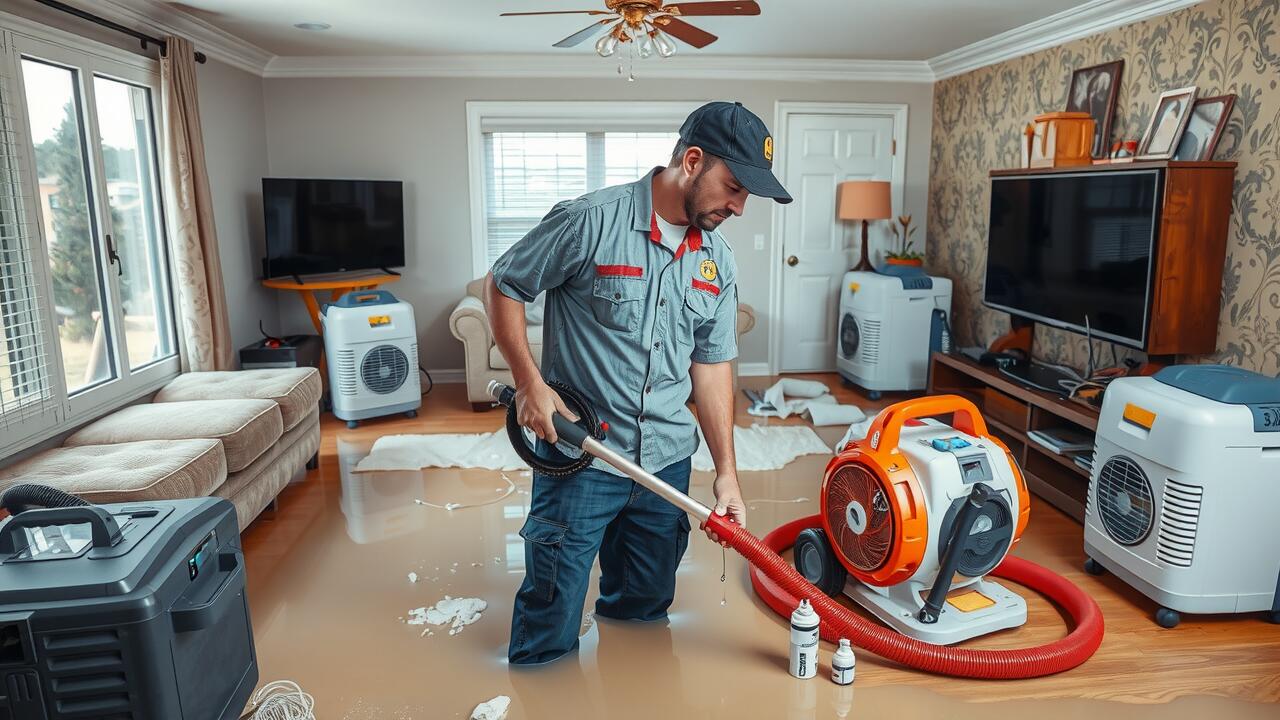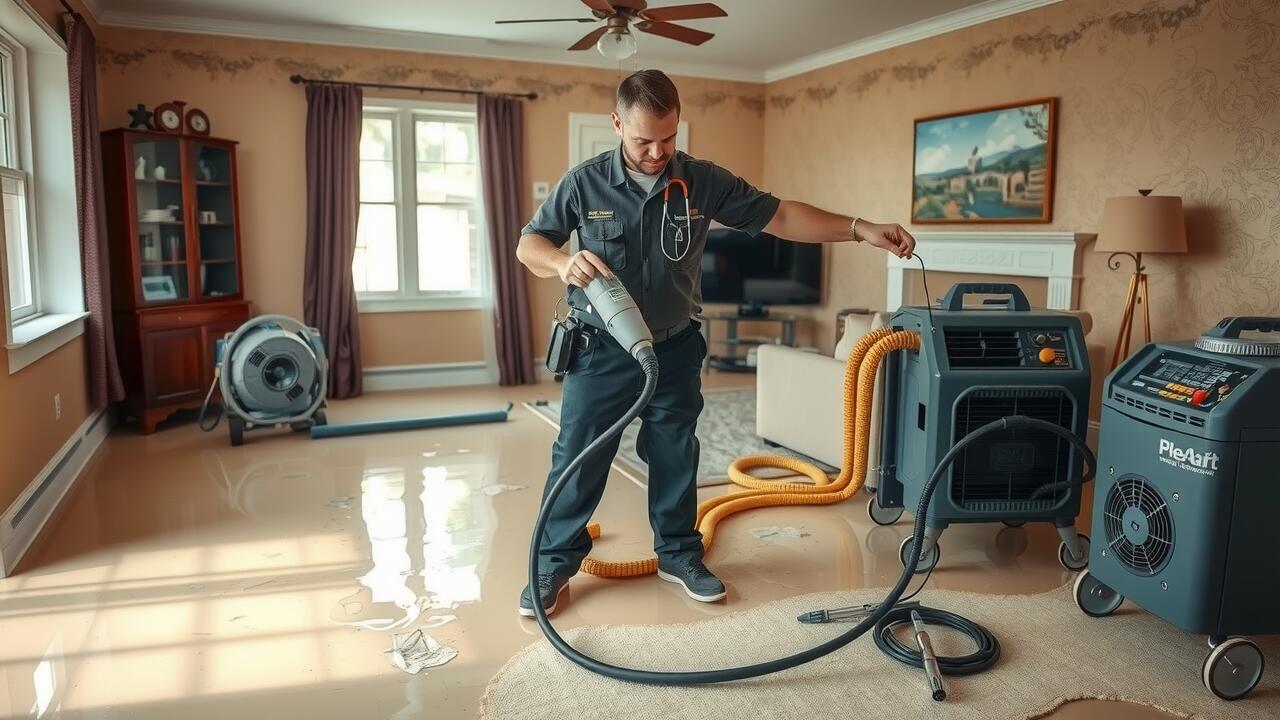
Techniques Used in Water Restoration
In water restoration, several techniques are employed to effectively address and mitigate damage caused by water intrusion. The initial step typically involves water extraction, which utilizes powerful pumps and vacuums to remove excess water from the affected area. This process is crucial as it helps prevent further structural damage and limits the growth of mold. After extraction, the focus shifts to drying and dehumidification, often employing industrial fans and dehumidifiers to thoroughly dry out materials such as flooring, walls, and furniture.
Cleaning and sanitizing the affected areas come next, ensuring that harmful microorganisms do not pose a future risk. Specialized cleaning agents are often used to eliminate any trace of mold, bacteria, or pathogens. In locations like Bexley, Ohio, water damage restoration also often involves services tailored to local conditions, ensuring that the techniques employed are effective in combating the specific challenges posed by the environment. Implementing these methods not only restores the aesthetic quality of a property but also reinstates safety for its inhabitants.
Common Methods and Technologies
Water damage restoration often involves several techniques and technologies tailored to address specific types of damage. Common methods include water extraction, drying, and dehumidification. Industrial-grade pumps and vacuums are employed for water extraction, quickly removing standing water from the affected area. Once the water is removed, air movers and dehumidifiers play a crucial role in drying the space, helping to prevent mold growth and further structural damage. These strategies are essential in Water Damage Restoration in Bexley, Ohio, where prompt action can minimize long-term effects.
In addition to these basic methods, advanced technologies like infrared cameras and moisture meters are frequently utilized. Infrared cameras help identify hidden moisture pockets within walls or flooring, while moisture meters provide accurate measurements of moisture levels in materials. These tools enhance the effectiveness of the restoration process by ensuring that all affected areas are adequately addressed. Professionals in the field maintain a commitment to using the latest technologies, enabling them to provide thorough and efficient service in cases of water damage clean-up.
Timeframes for Each Process
The timeframes for water remediation and restoration can vary significantly based on the extent of damage and the techniques employed. Water damage restoration may take a few days to several weeks. Initial assessments, water extraction, and drying processes typically form the foundation of this phase. Professionals aim to quickly stabilize the situation to prevent further damage and mold growth, making timely intervention essential.
Conversely, water remediation, particularly in more severe cases, can involve lengthy procedures that include comprehensive cleaning, sanitizing, and repairing structural elements. This process may extend over several weeks to months, especially if contamination or significant structural repairs are involved. For instance, Water Damage Restoration in Bexley, Ohio, might require thorough evaluations and specialized equipment, affecting overall project duration. Proper planning and coordination with local services play crucial roles in managing these timeframes efficiently.
Duration and Project Timelines
The duration for water remediation and restoration can vary significantly based on the extent of the damage and the methods employed. Remediation typically involves the removal of contaminants and can take anywhere from a few hours to several days, depending on the complexity of the situation. Restoration, on the other hand, generally requires more time as it includes repairs and replaces damaged structures or materials, potentially extending to weeks or even months if the damage is severe.
In regions like Bexley, Ohio, the local climate can impact timelines. Seasonal factors, such as heavy rainfall or winter freeze, often complicate the situation, necessitating more extensive remediation procedures. Homeowners and business owners engaging in Water Damage Restoration in Bexley, Ohio, should be prepared for potential delays resulting from these external factors. Effective project planning and real-time assessment can help streamline the process, but a clear understanding of the expected duration is crucial for setting realistic expectations.
Costs Associated with Remediation and Restoration
The costs associated with water remediation and restoration can vary significantly based on the severity of the damage and the technology used in the process. Homeowners often face expenses that include initial assessments, equipment rentals, and the labor needed for cleanup and repairs. Factors such as the type of water involved—whether it’s clean, gray, or black water—also play a crucial role in determining the overall costs. For those considering services like Water Damage Restoration in Bexley, Ohio, it is essential to gather estimates to understand the financial commitment required.
In addition to direct costs, there may be indirect expenses that arise from prolonged exposure to water damage. Structural issues can develop, leading to further repair costs down the line if not addressed promptly. Insurance coverage can help mitigate some of these financial burdens, but policy specifics must be reviewed closely to determine what is applicable. Engaging a professional service for assessments can ensure that both immediate and future costs are properly accounted for, allowing homeowners to plan their budget more effectively.
Budgeting for Water Services
Understanding the costs associated with water services is crucial for effective budgeting. Factors that influence expenses include the extent of damage, the required technology and equipment, and the professionals involved in the process. For instance, in cases of severe flooding, the need for comprehensive water extraction and structural repairs can significantly raise costs. Quotes from various service providers can help homeowners and business owners gauge expected pricing while ensuring they receive quality service.
In regions like Bexley, Ohio, it’s essential to consider local market rates for water damage services. Water Damage Restoration in Bexley, Ohio, may vary based on regional demand and the availability of skilled labor. Additionally, insurance coverage can impact out-of-pocket expenses, making it important to review policy details beforehand. By assessing these factors, individuals can establish a more accurate and realistic budget for addressing water-related issues.
FAQS
What is water remediation?
Water remediation refers to the process of removing contaminants from water to make it safe for consumption or environmental release. This often involves various techniques to clean, treat, or purify the water.
What is water restoration?
Water restoration is the process of returning water-damaged areas to their pre-loss condition. This includes repairing structures, cleaning up water damage, and ensuring that the environment is safe and habitable again.
How do the techniques used in water remediation differ from those in restoration?
Water remediation focuses on removing pollutants and contaminants from water, often using specialized technologies like filtration and chemical treatments. In contrast, water restoration involves physical repairs and drying processes to restore property and prevent further damage.
What are the typical timeframes for water remediation and restoration processes?
The timeframe for water remediation can vary widely depending on the extent of contamination, but it may take days to weeks. Water restoration typically takes less time, often ranging from a few days to a couple of weeks, depending on the severity of the damage and the size of the affected area.
How do costs compare between water remediation and restoration?
Costs can vary significantly based on the severity of the situation. Water remediation may involve higher costs due to specialized equipment and treatment methods, while restoration costs typically include repairs, cleaning, and labor, which can be less expensive overall.
